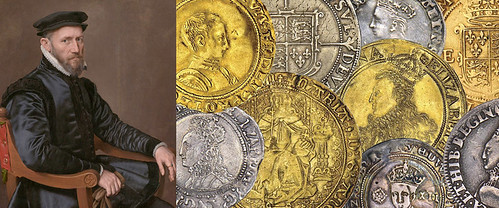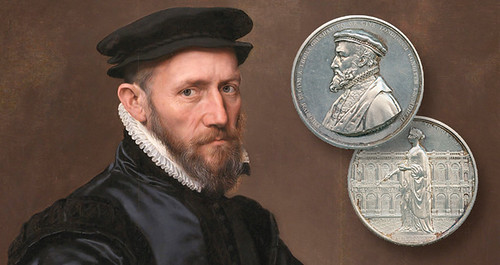
PREV ARTICLE
NEXT ARTICLE
FULL ISSUE
PREV FULL ISSUE
SIR THOMAS GRESHAM AND “GRESHAM’S LAW”
"Gresham's Law" was in the numismatic news this week. Here's one piece from the Stack's Bowers blog. -Editor

Question: At a recent coin show I overheard a coin dealer tell another dealer that the two coins he had were excellent examples of “Gresham’s Law.” I’ve heard of “Gresham’s Law” before, and wondered if it was anything like the old-time “Murphy’s Law” we’re all familiar with. Answer: It’s not surprising you heard “Gresham’s Law” at a coin show, as it deals directly with coins. Sir Thomas Gresham (circa 1519- November 21, 1579) was an English merchant and financier who worked closely in the finance of the British Isles with King Edward VI and the king’s half-sisters, Queen Mary I and Queen Elizabeth I. Gresham’s “law” was simple and direct, and still holds true today after nearly 450 years. Simply put, Gresham’s Law states that bad money drives good money out of circulation. In other words, and in Gresham’s own words, it is simply: “The tendency, when two or more coins are equal in debt paying power but unequal in intrinsic value, toward hoarding the more valuable, thus leaving the less valuable in circulation.” We all have heard the old English saw that “bad pennies drive good pennies out of circulation,” which is simply another way of stating Gresham’s Law. The next time you hear of Gresham’s Law, you will be privy to its actual meaning. To read the complete article, see:
Also, Jeff Starck had this article in Coin World. -Editor

Gresham — whose principle explains the existence of numismatic collectibles like Civil War tokens and the Holey dollar — also makes a brief numismatic appearance, on a 1844 silver medal for the opening of the Royal Exchange. An Extremely Fine example of the medal realized £432 ($668 U.S.) during a Sept. 23 auction by A.H. Baldwin & Sons Ltd. The price reflects the 20 percent buyer’s fee. The medal was issued to celebrate the new building for the Royal Exchange, a center of commerce in London. The current structure, completed in 1844, is the third built on the original site proposed by Gresham. The exchange was rebuilt twice, once following the Great London Fire in 1666 and again after another fire in 1838. William Wyon designed the medal, which shows Gresham on the obverse, paired with the statue of Queen Victoria before the new façade of the Royal Exchange on the reverse. The medal measures 74 millimeters in diameter and is cataloged as Eimer-1390 by Christopher Eimer in British Commemorative Medals and Their Values. How important was the reopening of the Royal Exchange? According to Eimer, this medal was one of more than 20 issued to commemorate the opening of the Exchange. The building was a major work by architect Wiliam Tite. To read the complete article, see:
Wayne Homren, Editor The Numismatic Bibliomania Society is a non-profit organization promoting numismatic literature. See our web site at coinbooks.org. To submit items for publication in The E-Sylum, write to the Editor at this address: whomren@gmail.com To subscribe go to: https://my.binhost.com/lists/listinfo/esylum All Rights Reserved. NBS Home Page Contact the NBS webmaster 
|